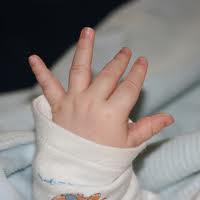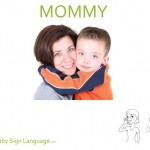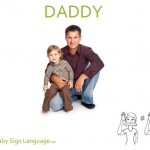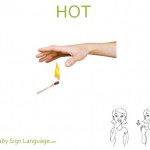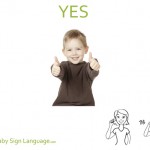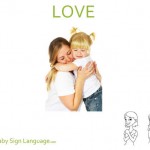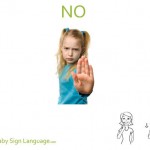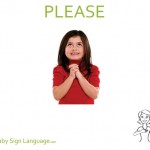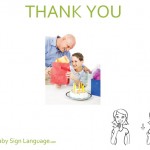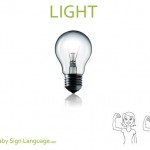Baby Signs Does It = Better Communication?
While on my three month maternity leave, I educated myself on teaching a hearing child baby signs and giving my baby the ability to express his important needs and thoughts through gestures. What is “baby signing”? Baby signing refers to the use of signs from American Sign Language (ASL) or other native languages—but with mother and baby modifications: that is, adjusting signing space, signing size, and sign duration or length to emphasize a salient sign and/or word.
A dear friend of mine taught her daughter basic signs and I found it remarkable how her daughter – then one year old – was able to communicate her basic needs via sign language with her mom without the presence of any tantrums or frustrations. Of course, she got frustrated when she was not given what she wanted all the time, but the same is true for all toddlers. I wanted to be able to communicate with my son at age when he still was not able to form words or vocalize his needs. No, I did not have unrealistic expectation that this would happen overnight nor did I expect him to start signing prior to 9 months old, but I thought this was worth a try. Especially, if the possibly existed that we could potentially minimize frustration and tantrums. Furthermore, I know this approach is not for every family.
Over the past couple years, basic baby signs have become more widely used in day cares and nursery schools, but still remains to be a very controversial issue. Some of the controversy relies around whether teaching a hearing baby/toddler sign language prior to learning to speak prolongs their verbal development. Actually, according to Drs. Acredolo and Goodwyn’s federally funded research showed that using baby signs actually helps babies learn to talk. They found that 2-year-olds who had used baby sign language had significantly larger verbal vocabularies than their non-signing peers. And by the time they were three years old, the language skills of the babies who had used baby sign language were more like that of 4 years old.
In particular, I have found that the baby boomer and older generations are more opposed to the use of baby signs. In my opinion, the underlying reason is the fear of the unknown. They fear their grandchildren speech will be delayed. But, the main reason is they fear that they will not be able to communicate with them. Their grandchildren sign and they do not know what they are saying. My suggestion to the baby boomer generation and others who are weary is too pick up a book, or watch a YouTube video on baby signs and learn the basics before judging. It might be scary, too hard to learn, or not what you want you do, but ultimately, this is the route your child chose to go to educate their child and you need to respect that. I am truly fortunate that my family has embraced it has tried to learn the basics. Here is a basic reference below, but at the bottom of the post you will be able to view some of the basic baby signs.
In my experience, baby signs have not hindered any verbal development if anything it has assisted. C2 started actively signing a few basic words like milk, more, and dirty (a.k.a yucky in our house) at 9 months old and at 20 months old speaks nearly 200 words and actively signs about 70 words. When we sign, we say the word or words as we do the sign, so he associates the word, with the object and/or action and the sign, which researchers highly encourage.
If this is an avenue that you are considering, here are my top six recommendations.
Realistically assess your child’s capabilities. A parent needs to ask themselves realistically, “Where is my child on the development chart and is he an earlier developer, exactly where the charts say he should be or more on the late side?” Every child develops at their own speed. For example, C2 is at the very end of average on physical development like he rolled, crawled and walked later than most of his peers, but with regards to object permanence and fine motor skills was more advanced than his peers.
Sign by example. When signing with your baby, sign while reading to, feeding, bathing, and diapering your baby provides appropriate contextual support for signs that flash cards and DVDs cannot offer. Signing should be interactive. I found that C2 found it exciting and more fun when I sat in front of him on the floor and read a book and signed the words. For example, “Daddy is on the phone,” “Baby wants a yummy cracker,” etc.
Adapt the signs to make them more do able for your baby. Emphasizing signs by adjusting their rate, size, duration, and frequency is important to making them more interesting and fun.
Encourage caretakers and family members to learn the basic signs when communicating with your child. I found it helpful that my family learned the basics because when they were watching him, they were able to understand his needs and wants. The basic signs are milk, more, eat, hurt (a.k.a boo boo), and help. See the bottom of the post for some of the basic signs.
Consistency is key. The more consistent you are as a parent when using the sign and verbally saying the words, your child will be more consistent with their signing. In my experience, makes it easier for effective communication to occur.
Babies do not sign over night. Do not worry yourself if your baby is not signing at six or nine months old. Remember, every baby is different. C2 did not sign consistently until 12 months old and at 17 months his verbal and sign language exploded. Every day he is adding new words and it is incredible watching him pick it up. C2 is so proud of himself the better he is able to communicate.
Baby signing can be fun, engaging, and educational all at the same time. If you decided to try baby signs, hopefully it will be as successful for you as it is for me. Enjoy and have fun!

